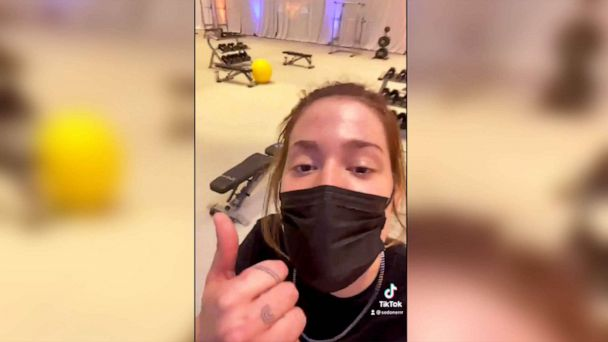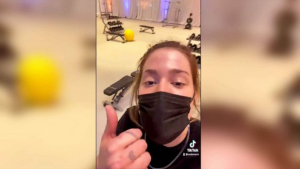

When die-hard fans and casuals alike think of the term “March Madness,” they likely think of the men’s basketball tournament, where one-and-done, do-or-die games result in a frenzy of upsets, crazy finishes, and overall intrigue. But what fans would be wise to remember, and seemingly the NCAA itself, is that the women’s basketball tournament occurs at the same time, and is packed with its own inexorable intrigue.
Sedona Prince, a forward for the Oregon Ducks, took to social media to show the vast differences in the amenities provided for the Division 1 women’s basketball players and the Division 1 men’s basketball players.
While the men had packed, fully-stocked gyms at their disposal, the women had a small area with light weights and nothing else. While the men were gifted with a gift basket of apparel of the tournament, called a “swag bag,” the women were gifted with a basket that hardly measured up. And while the men were given a bevy of food options, women were forced to eat paltry meals, like a hot dog for breakfast. Men were even reportedly given more reliable COVID-19 tests.
Prince’s viral social media postings and additional outcries eventually caused the NCAA to capitulate to demands and grant women with upgrades across the board. But the fact that the organization was able to oh-so-quickly make these changes in pursuit of equality makes their original decisions even more puzzling. If the NCAA could have given the women everything they did the men, why didn’t they? And even if the men’s conditions were not the bar for what the NCAA should provide for their athletes, why is the NCAA so clearly dismissive of its women athletes and averse to giving them an incredible tournament?
Dawn Staley, former two-time National Player of the Year in college, two-time Gold Medal winner, six-time All-Star in the WNBA, and Head Coach of the South Carolina Gamecocks, had much to say about the NCAA’s treatment of its women athletes. In a statement, she wrote, “I cannot be quiet. Women’s basketball is a popular sport whose stock and presence continues to rise on a global level. It is sad that the NCAA is not willing to recognize and invest in our growth despite its claims of togetherness and equality. We all came to San Antonio with one goal; it’s time for us to turn our attention to preparing our teams for that. But, it is also time for the NCAA to reevaluate the value they place on women.”
Staley specifically called out NCAA President Mark Emmert, and how NCAA executive leadership cannot righteously explain the disparities between the men and women, as they were the ones that created them.
As the women are soon slated to compete in the round of 16, their focus will undoubtedly be on their opponents and how they can win their next game. Distractions often cost teams championships, and these women have probably all waited their entire lives for this moment. Still, it is unfortunate and demoralizing that the conditions for women at the NCAA tournament had to become a focal point in national news coverage. The NCAA not only failed to make the tournament the story, but revealed their own misogynistic tendencies in the act.
The men and women at the NCAA tournament will compete like their livelihoods depend on it, and ultimately, only one team from each section will persevere.
Joy and exuberance will likely wash away all feelings of indignancy. Yet still, many of us, and likely the women that bowed out of the tournament early, will remember how they were treated by the NCAA.
And this is not the first time the NCAA has seen scorn for its treatment of its student athletes. With more and more players electing to skip college for the NBA G League or teams abroad, the NCAA is seeing that its grasp on sports has never been looser. And with repeatedly poor judgement and questionable morals like the treatment of its women athletes, it is not a surprise as to why.
